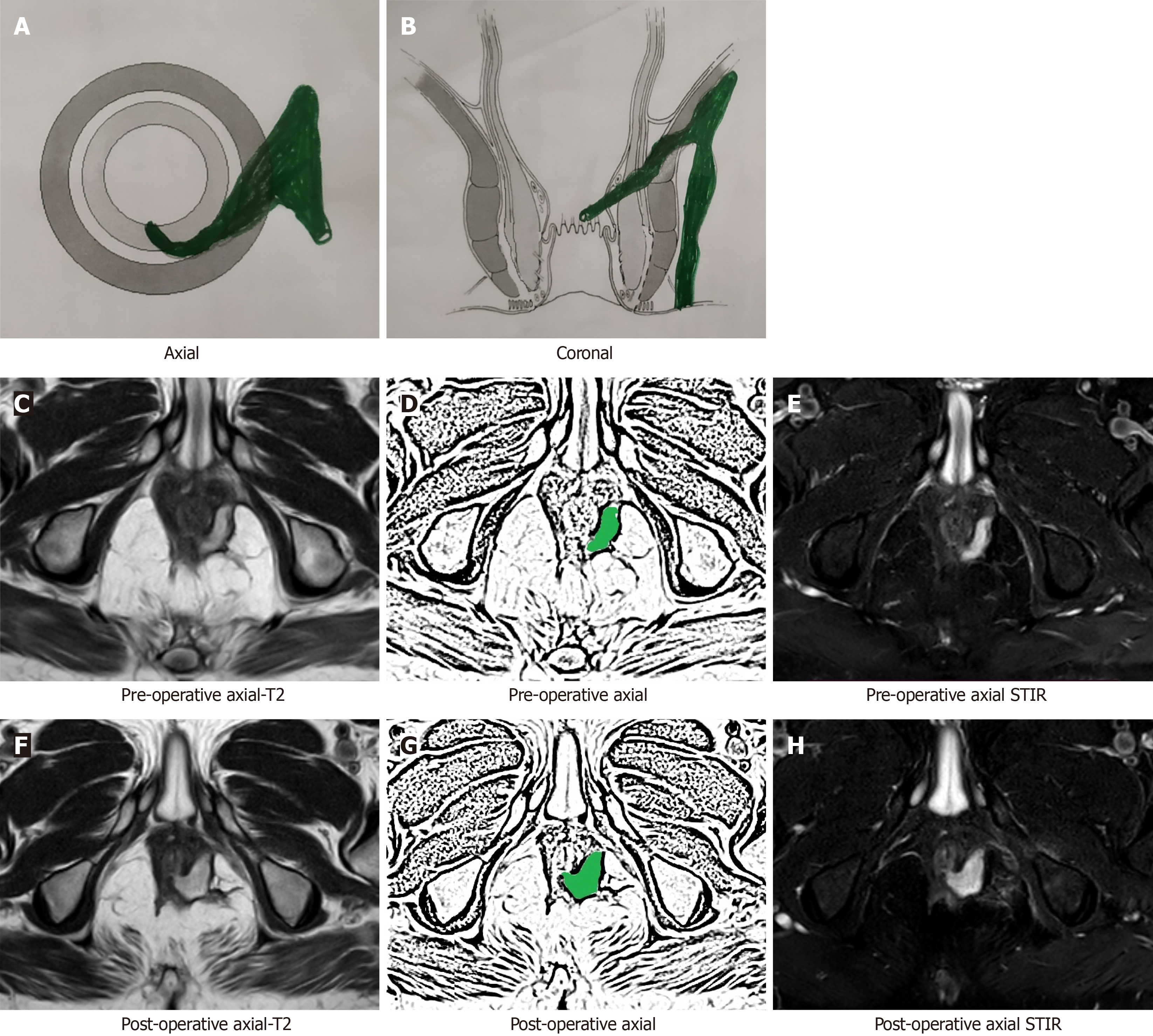Copyright
©The Author(s) 2021.
World J Gastroenterol. Sep 7, 2021; 27(33): 5460-5473
Published online Sep 7, 2021. doi: 10.3748/wjg.v27.i33.5460
Published online Sep 7, 2021. doi: 10.3748/wjg.v27.i33.5460
Figure 3 A 54-year-old male patient with a high transsphincteric fistula.
The fistula appeared to have ‘clinically’ healed as the external opening had closed with cessation of all pus. However, magnetic resonance imaging (MRI) done after 28 wk post-surgery showed patent internal opening and widening of intersphincteric portion of fistula tract. A: Axial section (schematic diagram); B: Coronal section (schematic diagram); C: Pre-operative T2-weighted MRI; D: Sketch of pre-operative axial MRI image highlighting internal opening and the intersphincteric portion of fistula tract (green color); E: Pre-operative short-T1 inversion recovery (STIR) axial MRI; F: Postoperative T2-weighted axial MRI (after 28 wk) showing patent internal opening and persistent intersphincteric portion of fistula tract; G: Sketch of postoperative axial MRI image highlighting patent internal opening and persistent intersphincteric portion of fistula tract; H: Postoperative STIR axial MRI (after 28 wk) showing patent internal opening and persistent intersphincteric portion of fistula tract. STIR: Short-T1 inversion recovery.
- Citation: Garg P, Kaur B, Yagnik VD, Dawka S, Menon GR. Guidelines on postoperative magnetic resonance imaging in patients operated for cryptoglandular anal fistula: Experience from 2404 scans. World J Gastroenterol 2021; 27(33): 5460-5473
- URL: https://www.wjgnet.com/1007-9327/full/v27/i33/5460.htm
- DOI: https://dx.doi.org/10.3748/wjg.v27.i33.5460









